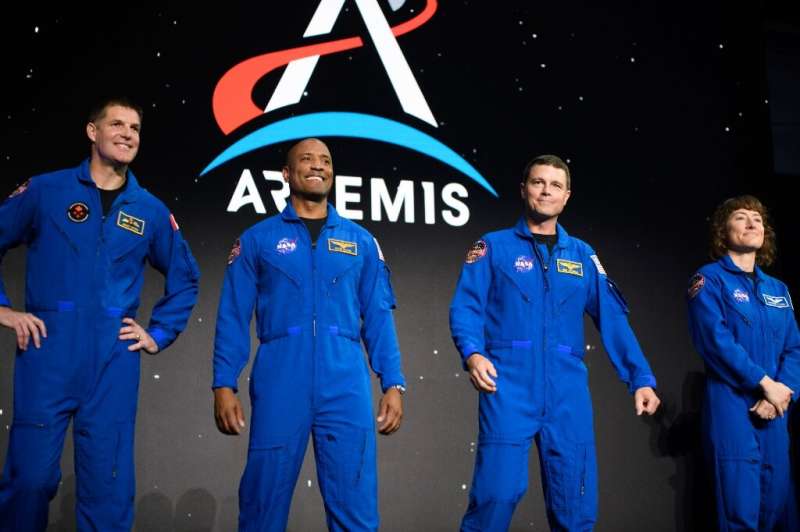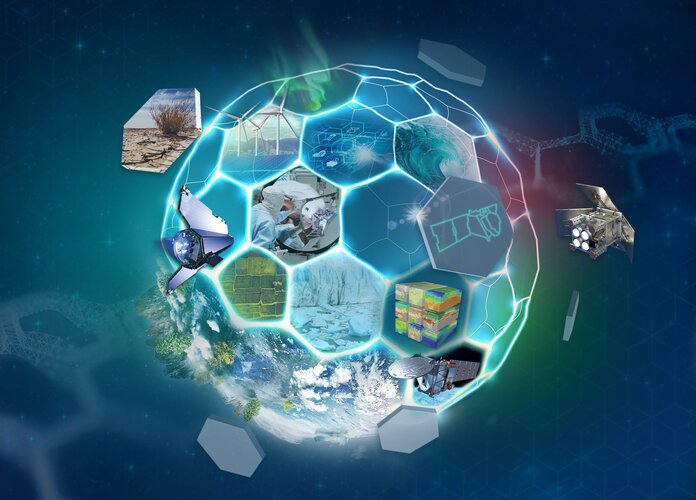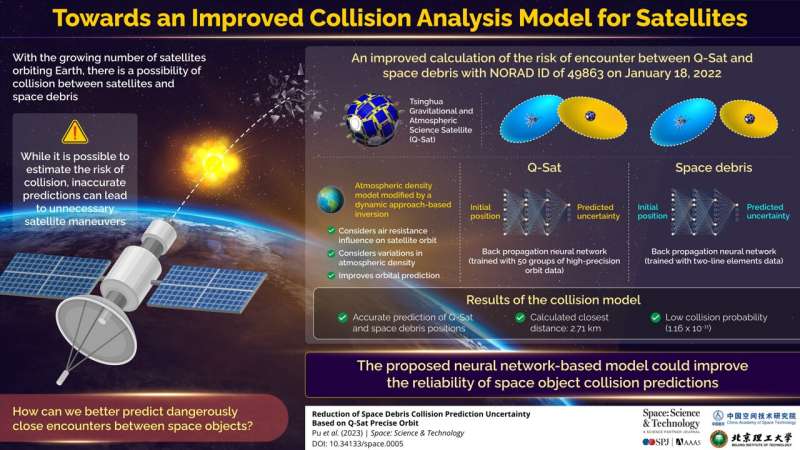
Copernical Team
First woman, Black astronaut to make 2024 flight around Moon

NASA unveiled the crew on Monday for its first human mission to the Moon in more than 50 years –- including the first woman and Black man to participate in a lunar flight.
Three Americans and one Canadian will fly around the Moon next year, becoming the first astronauts to venture that deep into space since the historic Apollo missions ended in 1972.
The flight, dubbed Artemis II, is scheduled to take place in November 2024 and is a prelude to returning humans to the lunar surface for the first time in a half century.
The three NASA astronauts—Reid Wiseman, Victor Glover and Christina Koch—named to Artemis II have all spent time on the International Space Station (ISS) while Jeremy Hansen of the Canadian Space Agency will be making his first space flight.
The four astronauts, dressed in blue flight suits, were introduced by NASA administrator Bill Nelson at an event at the Johnson Space Center in Houston.
EO Science Strategy workshop

Register for Earth Observation Science Strategy workshop
19-20 June – Bruges, Belgium
Earth's anisotropic inner core structure driven by dipole geomagnetic field: Study
 A geomagnetic field is generated in Earth's interior and extends into outer space to protect Earth from cosmic radiation and the charged particles of solar wind. The magnetic field is generated by the convection of charged molten iron fluids in Earth's outer core.
In contrast to the convective homogenous outer core, Earth's inner core is inhomogeneous and anisotropic. The seismic velocity
A geomagnetic field is generated in Earth's interior and extends into outer space to protect Earth from cosmic radiation and the charged particles of solar wind. The magnetic field is generated by the convection of charged molten iron fluids in Earth's outer core.
In contrast to the convective homogenous outer core, Earth's inner core is inhomogeneous and anisotropic. The seismic velocity NASA astronaut Christina Hammock Koch to become first woman to orbit the moon
 NASA astronaut Christina Hammock Koch - a flight engineer on the International Space Station and record-holder for the longest single spaceflight by a female - will become the first woman to orbit the moon next year when the space agency launches its Artemis II mission.
Koch's name was revealed Monday as a member of the four-person crew of astronauts from the United States and Canada
NASA astronaut Christina Hammock Koch - a flight engineer on the International Space Station and record-holder for the longest single spaceflight by a female - will become the first woman to orbit the moon next year when the space agency launches its Artemis II mission.
Koch's name was revealed Monday as a member of the four-person crew of astronauts from the United States and Canada Virgin Orbit files for bankruptcy, seeks buyer
 Virgin Orbit, the satellite launch company founded by Richard Branson, has filed for Chapter 11 bankruptcy and will sell the business, the firm said in a statement Tuesday.
The California-based company said last week it was laying off 85 percent of its employees - around 675 people - to reduce expenses due to its inability to secure sufficient funding.
Virgin Orbit suffered a major set
Virgin Orbit, the satellite launch company founded by Richard Branson, has filed for Chapter 11 bankruptcy and will sell the business, the firm said in a statement Tuesday.
The California-based company said last week it was laying off 85 percent of its employees - around 675 people - to reduce expenses due to its inability to secure sufficient funding.
Virgin Orbit suffered a major set Science with Euclid
 Video:
00:01:00
Video:
00:01:00
Discover the top five mysteries ESA’s mission Euclid will help solve.
ESA's Euclid mission is designed to explore the composition and evolution of the dark Universe. The space telescope will create a great map of the large-scale structure of the Universe across space and time by observing billions of galaxies out to 10 billion light-years, across more than a third of the sky. Euclid will explore how the Universe has expanded and how structure has formed over cosmic history, revealing more about the role of gravity and the nature of dark energy and dark matter.
A practical method to improve the accuracy of orbit prediction and position error covariance prediction

With continuous developments in the space industry, the space near the Earth is occupied by a variety of spacecraft whose number is increasing dramatically every year. To avoid a collision, huge computation power is necessary to determine the possibility of a collision between two space objects. However, there are various uncertainties in the collision prediction process, which aggravates the burdens on space safety management.
Since the collision probability is usually applied to evaluate a dangerously close encounter, improving the precision of orbit prediction and covariance prediction is key.
In a research paper recently published in Space: Science & Technology, Zhaokui Wang, from Tsinghua University, proposed an efficient method with a back propagation (BP) neural network to improve the accuracy of orbit prediction and position error covariance prediction of space targets.
Wang's team also applied the proposed method to estimate the collision probability for the Q-Sat and space debris with NORAD ID of 49863.
Improving the accuracy of orbit prediction and position error covariance prediction
 With continuous developments in the space industry, the space near the earth was occupied by a variety of spacecraft whose number is increasing dramatically every year. To avoid a collision, huge computation power was spent to determine the possibility of a collision between two space objects. However, there were various uncertainties in the collision prediction process, which aggravated the bur
With continuous developments in the space industry, the space near the earth was occupied by a variety of spacecraft whose number is increasing dramatically every year. To avoid a collision, huge computation power was spent to determine the possibility of a collision between two space objects. However, there were various uncertainties in the collision prediction process, which aggravated the bur Integral safe at last
 In 2020, the thrusters on ESA's Integral spacecraft failed. To keep the scientific mission alive, the Integral team at ESA's ESOC mission control centre quickly set to work developing a new series of specialised manoeuvres that would enable them to continue flying the spacecraft using only its reaction wheels - the rotating wheels inside a satellite that allow it to store and use angular momentu
In 2020, the thrusters on ESA's Integral spacecraft failed. To keep the scientific mission alive, the Integral team at ESA's ESOC mission control centre quickly set to work developing a new series of specialised manoeuvres that would enable them to continue flying the spacecraft using only its reaction wheels - the rotating wheels inside a satellite that allow it to store and use angular momentu LeoLabs and ClearSpace partner to advance a safer, more sustainable space environment
 LeoLabs, the world's leading commercial provider of low Earth orbit (LEO) Space Situational Awareness and Space Traffic Management services, has announced a memorandum of understanding (MOU) with ClearSpace, the Swiss-based, in-orbit satellite servicing company. The MOU recognizes the two companies' shared vision of a safe and sustainable space ecosystem and their mutual efforts in making this v
LeoLabs, the world's leading commercial provider of low Earth orbit (LEO) Space Situational Awareness and Space Traffic Management services, has announced a memorandum of understanding (MOU) with ClearSpace, the Swiss-based, in-orbit satellite servicing company. The MOU recognizes the two companies' shared vision of a safe and sustainable space ecosystem and their mutual efforts in making this v 